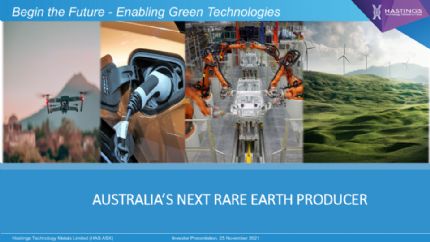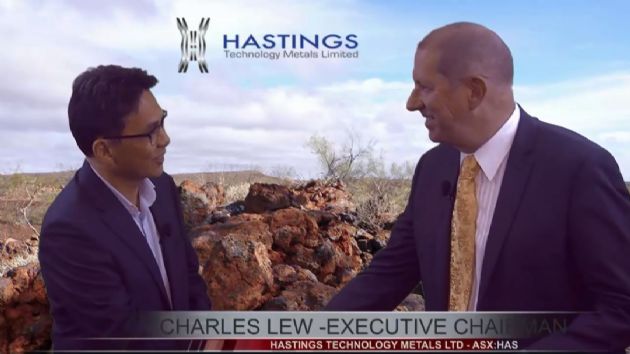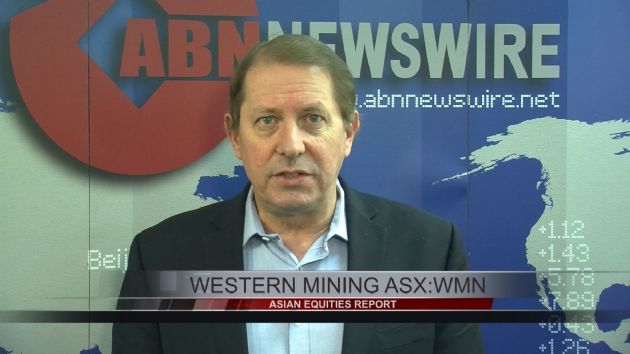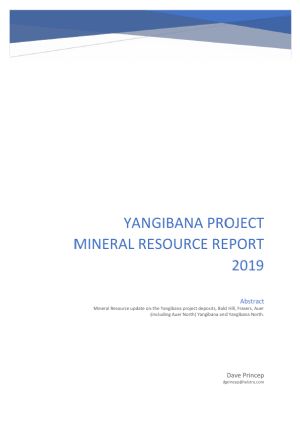An interesting trend is starting to become apparent. This week while the Great & Good of the Canadian mining scene are whooping it up and taking Prince’s advice to “Party Like Its 1999” (not a great year for copper, we might add…) I was being abstemious and attending the Argus Metals Week event in the City of London. While the crowd was primarily traders and end-users, there were also a few serious players from the mining space (i.e. producers and near producers) amongst which (so far seen) were Galaxy Resources and Orocobre.
One trend that has become apparent from this event, some recent digging I have been doing on graphite and from some talks with company executives in the Rare Earth space is that a MAJOR change has taken place since 2010. That change is a shift AWAY from Asia as a value-added location. It may still rank as a prime destination for some of the metals, with end-users being located there but quite a lot of players can’t get farther away from China if they tried.
Let us summarise:
- Elcora Advanced Materials with their graphene/anode plant in Halifax
- Galaxy Resources talking of a hydroxide lithium plant in Japan
- Syrah Resources talking of a graphite plant in Louisiana
- Ucore talking of a full-scale MRT plant in Alaska (or Utah or another US state)
- Peak Resources with their proposed plant on Teeside in the UK
- Neometals pondering a Lithium plant in either the US or in Australia
- Hastings Technology Metals undertaking talks for locating a REE-upgrading facility in Western Australia
- TriStar planning an Antimony roaster in Oman
- Rare Earth Salts building a plant in Nebraska
Back in 2010 all the talk was of putting plants in China or as close to China as one could locate them. The end result for two players we can think of was either extreme disruption or delays and associated financial near-death experiences. Clearly, much to our surprise, lessons have been learnt. It’s not often one can say that in the mining space.
The lightbulb that came on for us and helped us identify (illuminate?) the trend was a meeting we had in London with the CEO of Hastings Technology Metals Ltd. (![]() ASX:HAS), Charles Lew a few weeks ago. I was nearly floored when he said he had been in discussions with the Western Australian government about locating the REE upgrading plant in the state.
ASX:HAS), Charles Lew a few weeks ago. I was nearly floored when he said he had been in discussions with the Western Australian government about locating the REE upgrading plant in the state.
Conventional wisdom back in the first flush of Rare Earths was that processing plants anywhere except in “cheap” locations did not work and particularly that Australia was super expensive with molly-coddled workers. The cost of “cheap” then became apparent as did the advantage of being in jurisdictions where the rule of law is good and the rules are the same for all players (not to mention patent protection for one’s technology). Hastings in our opinion are making the right decision.
We shall here briefly refresh investors on what the Hastings story looks like now that it has cemented itself in the hardy band of survivors in the REE space.
Yangibana
Over recent years Hastings has established a significant tenement package covering approximately 650 sq km which it terms the Yangibana Project. The project is centred approximately 270km east-northeast of Carnarvon on Wanna Station in the Gascoyne region of Western Australia and is best accessed via Gascoyne Junction.

Hastings tenements now cover the bulk of the Gifford Creek Carbonatite Complex. The primary mineralisation targets within the Yangibana Project are narrow, discontinuously outcropping ironstone dykes related to this carbonatite complex. These ironstones are considered to be a younger phase which has cut across the carbonatite dykes, possibly leaching and upgrading Rare Earths (and base metals) from the older dykes.
The ironstone dykes have been shown to carry anomalous Rare Earths associated with monazite mineralisation. The carbonatite dykes themselves, along with the associated fenitic alteration, are considered to be sourced from an as yet undiscovered carbonatite intrusion which the company feels might have significant Rare Earth potential as well as possible base metal potential.

Previous exploration at Yangibana has included reverse circulation drilling at a number of prominent targets, and on the basis of this drilling a non-JORC resource of 3.5 million tonnes at 1.63% TREO was estimated by a previous explorer. The vast majority of this resource lies in the near surface oxidised zone. Below can be seen a cross-section of the Yangibana North part of the deposit with the Rare Earths being exceptionally near to the surface and indeed being in a relatively easily mineable band only ten metres in vertical thickness that outcrops at surface. This helps put Hastings in contention with some of the Xenotime deposits in Western Australia that are also at surface.

As we have noted when we last wrote about Hastings, beyond this proximity to the surface, the Rare Earths mineralisation contains unusually high neodymium values with its oxide, Nd2O3, averaging 4000ppm or 25% of TREO.
Resource
The company published an updated resource estimate in January of 2017 that had been prepared by Widenbar and Associates.
The updated resources represented a significant increase and upgrade compared to the October 2015 resource estimate. The contained TREO has increased to 157,950 tonnes, a 19% increase on the October 2015 estimate, and contained Nd2O3+Pr2O3 has increased to 52,400 tonnes, a 22% increase on the October 2015 estimate. Part of the increase was due to the inclusion of the first Measured Resources to be estimated for the project following the infill drilling program at the Bald Hill and Fraser’s showings.
The previous resource had been based on drilling in 2014 that had led to the definition of JORC resources totalling 6.79 million tonnes at 1.5% TREO including 0.35% Nd2O3.
It should be recalled that the Hastings concessions consist of areas that are 100% owned and some that are 70% owned. Thus the 100% owned resource is shown as:

While the resource on the territory that is 70% held is:

To visualize the breakdown of the metals in the mix we created this pie chart.

The Next Steps
At this stage Hastings has a Pre-Feasibility Study under its belt and is moving towards a Bankable Feasibility Study. The PFS was prepared by Tetra Tech Proteus, the independent global engineering consultant.
The PFS was based on a 7âyear operation extracting only JORC Indicated Resources (as per the 2015 estimate) with a beneficiated concentrate of 20% TREO and 5.05% mass pull (since increased to 30% and 3.1%) being employed in the financial analysis. The key metrics arising from the study were:
- PreâTax Net Present Value (NPV) of $700â750 million at an 8% discount rate
- Internal Rate of Return (IRR) of 40% with a payback on capital of 2.5 years
The company is operating under the premise of a toll-treatment model . The hydrometallurgical concentrate produced on site will be shipped overseas (most likely Vietnam) for further separation and refining into individual rare earths oxides. Certainly having the Vietnamese facility available certainly lowers the capex and leaves one wondering why so many other REE players are wanting to run before they crawl and eschew this sensible alternative.
The company revealed back in April 2016 that Non-Disclosure Agreements had been signed with potential end customers of separated rare earths oxides and metals. The goal is to secure offtake contracts with management stating that the prospects for supply of hydromet REE concentrate to overseas customers was promising in view of onâgoing negotiations.
Conclusion
The Darwinian forces that winnowed the Rare Earth crowd were a lesson in capitalist dynamics. However, nature abhors a vacuum and the space could not be left entirely empty. The band of survivors stand out to potential investors (either portfolio or trade) for their sheer persistence and commitment when as one knows any idiot can convert a shell into a gold play and ride the latest fad. Those who persisted in Rare Earths were a hard-core indeed.
All that is needed now is for the Great Thaw of the Rare Earth Ice Age. Excepting one new listing in London, all of the other (less than ten) serious players left in the space are all loaded with DFS’s and reworked PEAs etc so ready to come out of the gates once the starting bell is rung in the 2017 running of the long-delayed Rare Earth Stakes. Hastings has to be a favoured runner in this race and its strategy of adding its value-added in relative proximity makes eminent sense.
![]()
Editor: Christopher Ecclestone (InvestorIntel.com)
Christopher Ecclestone is a Principal and mining strategist at Hallgarten & Company in London. Prior to founding Hallgarten & Company in New York in 2003 ...
About Hastings Technology Metals Ltd
 Hastings Technology Metals Ltd (ASX:HAS) (FRA:5AM) is advancing its Yangibana Rare Earths Project in the Upper Gascoyne Region of Western Australia towards production. The proposed beneficiation and hydro metallurgy processing plant will treat rare earths deposits, predominantly monazite, hosting high neodymium and praseodymium contents to produce a mixed rare earths carbonate that will be further refined into individual rare earth oxides at processing plants overseas.
Hastings Technology Metals Ltd (ASX:HAS) (FRA:5AM) is advancing its Yangibana Rare Earths Project in the Upper Gascoyne Region of Western Australia towards production. The proposed beneficiation and hydro metallurgy processing plant will treat rare earths deposits, predominantly monazite, hosting high neodymium and praseodymium contents to produce a mixed rare earths carbonate that will be further refined into individual rare earth oxides at processing plants overseas.
Neodymium and praseodymium are vital components in the manufacture of permanent magnets which is used in a wide and expanding range of advanced and high-tech products including electric vehicles, wind turbines, robotics, medical applications and others. Hastings aims to become the next significant producer of neodymium and praseodymium outside of China.
Hastings holds 100% interest in the most significant deposits within the overall project, and 70% interest in additional deposits that will be developed at a later date, all held under Mining Leases. Numerous prospects have been identified warranting detailed exploration to further extend the life of the project.
Brockman Project
The Brockman deposit, near Halls Creek in Western Australia, contains JORC Indicated and Inferred Mineral Resources, estimated using the guidelines of JORC Code (2012 Edition).
The Company is also progressing a Mining Lease application over the Brockman Rare Earths and Rare Metals Project.
Hastings aims to capitalise on the strong demand for critical rare earths created by the expanding demand for new technology products.
| ||
|










